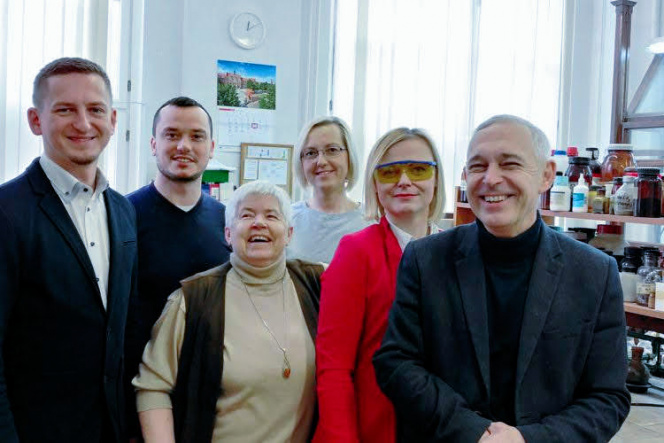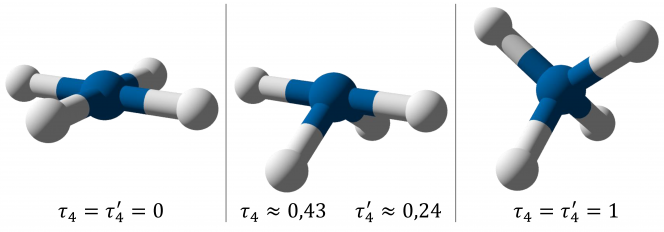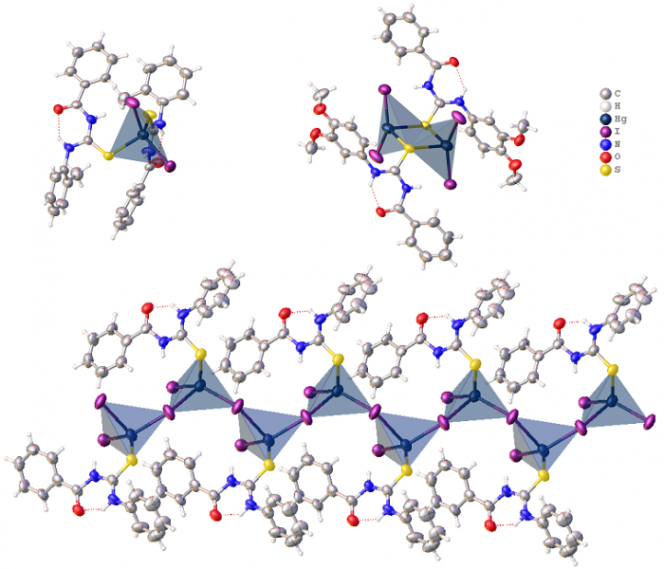
Members
- Prof. Jarosław Chojnacki, Ph.D., D.Sc., Eng.
- Prof. Barbara Becker, Ph.D., D.Sc., Eng.
- Dr. Andrzej Okuniewski, Ph.D., Eng.
- Katarzyna Kowalewska, M.Sc.
Diploma students
- Damian Kochowicz
Ph.D. graduates
- Dr. Damian Rosiak, Ph.D., Eng.
- Dr. Agnieszka Brozdowska, Ph.D., Eng.
Scope
Our research group works on widely understood crystal engineering. We are interested in the processes of crystalline solids formation from single molecules (ions) or "infinite" polymers. We investigate the role of intermolecular interactions in the crystal packing, such as hydrogen, halogen, chalcogen, or stacking interactions [1]. Our goal is the synthesis of systems with a specific topology and symmetry, which allows obtaining systems with unique physicochemical properties (e.g., induction of chirality [2]).
In the area of our interest, there are mainly complex compounds of p and d block metals with S-donor ligands (thioamides, thioureas, thiosulphates, dithiocarbamates, xanthates, silanothiolates and others). Most of these ligands are synthesized in our laboratories. The obtained products are characterized by X-ray structural analysis, spectroscopic methods and other methods that the Structural Research Laboratory and laboratories that we work with allow.
We support experimental research with computational methods (e.g. Gaussian, NBO, Tonto, CrystalExplorer packages). We are interested in the mathematical interpretation of experimental results.
In our group, the geometric index (Wikipedia) τ4′ [3] was developed, which better reflects deviations of the geometry of coordination centers from the geometry of an ideal tetrahedron than the τ4 parameter used so far (Fig. 1).

As part of our research, we try to obtain materials with interesting physicochemical (molecular wires, meso-, micro- and nanoporous MOF-type materials) or catalytic (related to modifiable metal centers in polynuclear complexes) properties. So far we have obtained a series of mono- and dinuclear, as well as polymeric coordination compounds of mercury(ii) halides with thiourea derivatives (Fig. 2) and linear "molecular wires" containing copper(i) ions (Fig. 3).


We are also developing cooperation with other scientific teams based, for example, on the determination of structures of biologically active compounds [6] or coordination polymers of lanthanides [7].
References
- A. Okuniewski, D. Rosiak, J. Chojnacki, B. Becker: Crystallographic study of self-organization in the solid state including quasi-aromatic pseudo-ring stacking interactions in 1-benzoyl-3-(3,4-dimethoxyphenyl)thiourea and 1-benzoyl-3-(2-hydroxypropyl)thiourea. Acta Cryst. C 73 (2017) 52-56, doi:10.1107/S2053229616019495.
- A. Brozdowska, J. Chojnacki: Chiral and achiral crystals, charge-assisted hydrogen-bond patterns and self-organization of selected solid diaminium thiosulfates. Acta Cryst. B 73 (2017) 507-518, doi:10.1107/S2052520617004802.
- A. Okuniewski, D. Rosiak, J. Chojnacki, B. Becker: Coordination polymers and molecular structures among complexes of mercury(II) halides with selected 1-benzoylthioureas. Polyhedron 90 (2015) 47-57, doi:10.1016/j.poly.2015.01.035.
- D. Rosiak, A. Okuniewski, J. Chojnacki: Novel complexes possessing Hg‒(Cl, Br, I)···O=C halogen bonding and unusual Hg2S2(Br/I)4 kernel. The usefulness of τ4' structural parameter. Polyhedron 146 (2018) 35-41, doi:10.1016/j.poly.2018.02.016.
- D. Rosiak, A. Okuniewski, J. Chojnacki: Copper molecular wires formed out of benzoylthiourea complexes. 59 Konwersatorium Krystalograficzne, plakat A48 (2017) 115.
- B. Żołnowska, J. Sławiński, M. Belka, T. Bączek, A. Kawiak, J. Chojnacki, A. Pogorzelska, K. Szafrański: Synthesis, Molecular Structure, Metabolic Stability and QSAR Studies of a Novel Series of Anticancer N-Acylbenzenesulfonamides. Molecules 20 (2015) 19101-19129, doi:10.3390/molecules201019101.
- R. S. Viana, J. Chojnacki, E. H. L. Falcão, S. A. Júnior: New Coordination Polymers Based on a V-Shaped Ligand and Lanthanides. Structural Description and Symmetry - Luminescence Correlation Using Europium as a Probe. J. Lumin. 181 (2017) 29-38, doi:10.1016/j.jlumin.2016.09.057.




